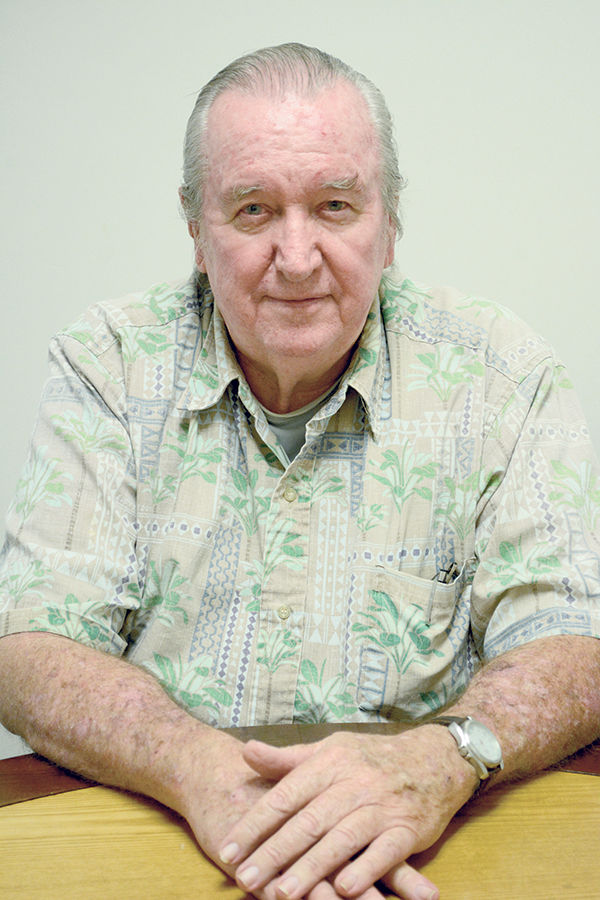It was June 12, 1962, about 2 a.m., and 22-year-old John Hoff was sleeping at the U.S. Coast Guard base on Government Island in Oakland. “Get up, get dressed,” he heard a voice tell him. “Draw your arms and let’s
It was June 12, 1962, about 2 a.m., and 22-year-old John Hoff was sleeping at the U.S. Coast Guard base on Government Island in Oakland.
“Get up, get dressed,” he heard a voice tell him. “Draw your arms and let’s go.”
The E2 seaman second class quickly rose, dressed, collected his .45 and rushed out into pitch darkness. He was about to find himself part of one this country’s still unsolved mysteries.
Hoff, today a Lawai resident, was among the first responders to search the waters of the San Francisco Bay for three men, Frank Morris and brothers John and Clarence Anglin, who had escaped from Alcatraz, a maximum security prison on an island often referred to as “The Rock” in the middle of the bay.
For the next several hours until daylight, the Coast Guard patrol boats, joined by other law enforcement agencies, combed the waters for the trio that pulled off an amazing escape the night of June 11.
They didn’t find them.
Hoff, at one point, put his hand in the bay. The water was warm, he said, “the warmest I have ever felt it,” more than its usual frigid temperatures. And the bay was relatively flat and calm, without much of a current.
“It was almost like Nawiliwili Harbor,” Hoff said. “It wasn’t very active that night.”
As the search continued and there was no sign of the men, Hoff became convinced of one thing: Their escape was successful.
“At that moment I said, ‘These guys might have made it,’” he said.
More than 50 years later, Hoff hasn’t changed his mind.
For decades, he has watched the news, followed updates, scoured the Internet for the latest on Frank Morris, the escape’s mastermind.
“Every time they mentioned it, I was thinking about it,” Hoff said. “I’ve lived with it the past 52 years.”
While the official word was that Morris and the Anglins, convicted bank robbers, drowned and their bodies disappeared into the deep, Hoff doesn’t believe it.
“They didn’t find anything, ever,” he said. “They didn’t find diddly-squat.”
Hoff, who signed up for the Coast Guard out of high school in 1958, served just a few more days with the Guard after the escape before concluding his four-week annual duty. He didn’t share his opinion much back then about the great escape. Better to just be quiet, he decided, than question the official findings from above.
“That’s not something you talk about to everybody,” he said.
Recent reports, however, further convince him Morris and the Anglins made it.
One involved Dutch scientists who studied the San Francisco Bay’s tides and reconstructed the possible routes of the escape. They concluded that if the men left Alcatraz on their raft constructed from rubber raincoats before 11:30 p.m., the current would have probably swept them out to sea.
“But if the prisoners set off on their raft between 11:30 and midnight, it’s likely that they could have landed just north of the Golden Gate Bridge, at Horseshoe Bay,” the report concluded. “The models also show that any debris after the landing might have drifted toward Angel Island, north of Alcatraz, which is where the FBI found a paddle and some personal items linked to the men.”
When Hoff read that, he said he “about fell over.”
The official finding, after a lengthy investigation, was that the three men, despite never being found, likely drowned. Some point out that if three habitual criminals actually survived the escape, they would likely have returned to their life of crime and shown up somewhere. The scientists studying the currents determined if the prisoners had left before 11, “They would have had absolutely no chance of surviving.” It is generally believed they launched their craft about 10 p.m.
Hoff isn’t buying it.
“Nah, I don’t think so,” he said, chuckling. “I’m a conspiracist, anyway.”
Hoff still believes if the three men had drowned, their bodies, at least one of them, would have been found. He said in the early ‘60s during his time with the Coast Guard, they often pulled bodies from the bay.
“San Francisco used to have the highest suicide rate in the nation. People were jumping off the Gold Gate Bridge,” he said. “Bodies go down and resurface.”
He points out, too, that there were many escape attempts from Alcatraz — 14 tries involving 36 men over three decades — and almost all were caught or died.
No sign of Morris and the Anglins was ever found and their fate remains, for most, a mystery. Their daring escape was the stuff of legend and was turned into a moving starring Clint Eastwood, “Escape from Alcatraz.”
The men fooled guards by fashioning dummy heads made from soap, toilet paper and hair, and placing them in their beds. They reached a utility corridor by digging holes from their cells using sharpened spoons and made it to the prison roof. From there, they shimmied down a smoke stack and climbed a fence. They floated away on a small raft made from stolen raincoats that were inflated with a musical instrument. It was, investigators later said, “ingenious.”
Hoff and others venture that accomplices could have met the escapees by boat and the men fled the U.S. One later unconfirmed report was that Morris was alive and living in Ireland under a fake name.
Together, even without concrete evidence, Hoff believes his theory more than half a century ago was right. And he is glad to let this case, in his mind, rest.
“This is kind of a closure to me,” he said.


